For photographer Jo Ractliffe, centrality of focus has been an issue to approach carefully. Often it has been the peripheral glance, the slightly out of focus view already sliding past, that has engaged her interest, rather than the one directly ahead.
The use of cheap cameras, which allowed black-and-white photos to gather dark areas around the edges, or which could have their framing device removed so that images could be allowed to run into each other in a long strip, as in her Johannesburg series, is part of Ractliffe’s aesthetic.
Her way of capturing Vlakplaas, the nondescript farm that in the apartheid era was a base where the Security Police planned horrific acts of violence on activists, was to photograph the banal surroundings of the farm from the road, capturing random trees, bits of fence, dirt, on the film. Her approach here duplicated the often arbitrary hit-and- run attacks of the notorious Vlakplaas crew, and the piece, appropriately, was called “Vlakplaas: 2 June 1999 (drive-by shooting).” She chose to make the photograph on the day of South Africa’s second democratic election, reflecting on the significance of Vlakplaas in the country’s past.
Animals and the ways they embody human relationships and attitudes are another of Ractliffe’s interests. One of her best-known images is “End of Time,” the head of a dead donkey, seen by the roadside and photographed in crystalline black-and-white detail.
Thus her 2003 “Real Life” series, lush images of restricted views of the sky and back garden of a suburban home, were a surprise. Like stills from a David Lynch movie, the saturated color is a little unreal, so rich one imagines it is a cover-up for some detail just off camera, some event that might just have taken place, and that if the camera was to pan down, or up, an unpleasant body fragment might come into view.
The suburban garden is Ractliffe’s own. The artist lives in Bez Valley, once a working-class white suburb of Johannesburg, now one of the few suburbs in the country where real integration is taking place. Looking out of her window one night, Ractliffe was struck by the way the full moon intensified the highlights on a grapevine, making it look plastic, and turned the rockery into an artificial pile of stones. Over the next months Ractliffe photographed the small patch of sky visible above the garden, the statuary dotted around it, and her dog, Pilgermann.
Deeply intriguing as the images are, like all of Ractliffe’s photographs, they arouse our interest rather than satisfy it, provoking a desire to know more, to achieve what we can only in our imagination, to see beyond the frame.

“Vlakplaas: 2 July 1999 (drive-by shooting)” 1999
Black and white pigment print
40 x 230 cm
Image courtesy of the artist
© Jo Ractliffe
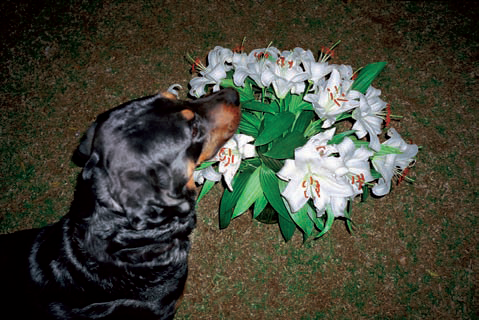
“Real Life: dog with lilies” 2002–05
Color photograph
46 x 69 cm
Image courtesy of the artist
© Jo Ractliffe
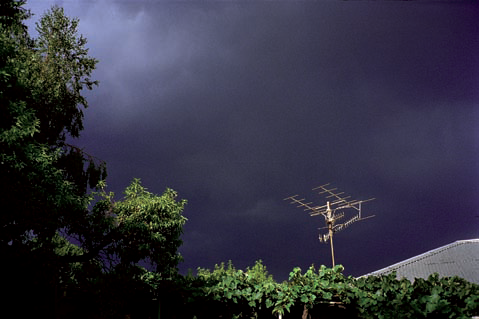
“Real Life: afternoon storm light with TV aerial” 2002–05
Color photograph
46 x 69 cm
Image courtesy of the artist
© Jo Ractliffe
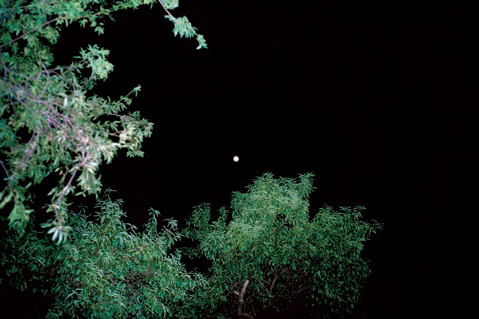
“Real Life: full moon above windy trees” 2002–05
Color photograph
46 x 69 cm
Image courtesy of the artist
© Jo Ractliffe
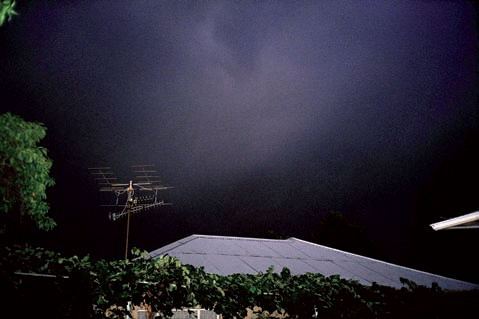
“Real Life: stormy sky over neighbor’s rooftop with TV aerial” 2002–05
Color photograph
46 x 69 cm
Image courtesy of the artist
© Jo Ractliffe
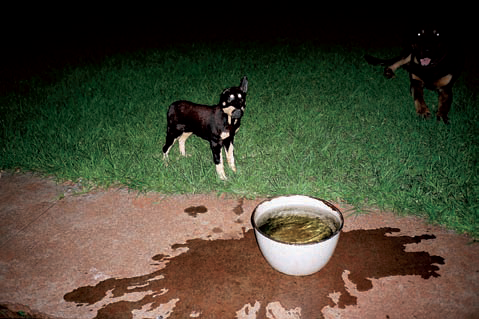
“Real Life: two dogs and waterbowl” 2000–05
Color photograph
46 x 69 cm
Image courtesy of the artist
© Jo Ractliffe
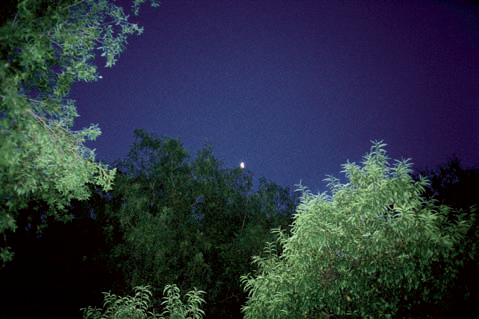
“Real Life: treetops in evening moonlight” 2002–05
Color photograph
46 x 69 cm
Image courtesy of the artist
© Jo Ractliffe